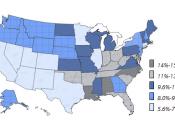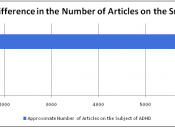Attention-Deficit/Hyperactivity Disorder, more commonly known as ADD or ADHD, has become much more common recently. As of 1994 the DSM-IV stated that about 3%-5% of American school aged children have this disorder. While it is quite a few children, what I find to be even more interesting are the male-to-female ratios within the disorder. They range from 4:1 to 9:1. What I've looked into finding out is why there is such a gender difference. I wanted to know if it was because the way society raises girls, or are boys really at a higher risk for it.
To begin with, ADHD can be divided up into 3 different sub-categories. There are the hyperactive-impulsive type, the inattention type, and the combined type. To be diagnosed with the hyperactive-impulsive type a child needs to be seen as being very fidgety or on the go all the time, and engaging in physical activity that isn't appropriate for the setting that they are in.
They also would have some signs of impulsivity that can include difficulty taking turns, interrupting people, and blurting out answers before the question is finished. Then there is the impulsivity sub-type. To be diagnosed with this, a child must show more symptoms from the impulsive list than the hyperactive ones. These, along with the ones stated before, can include seeming too not listening when spoken to and easily being distracted by extraneous stimuli. Finally, there is the combined type that, just like its name implies, this sub-type needs to meet all criteria for both hyperactive-impulsive and inattention (DSM-IV, 1994).
I am interested in this topic because I worked with children at a school in my hometown, and there was this one little girl that used to go to the public school, but she got kicked out, but she still...


